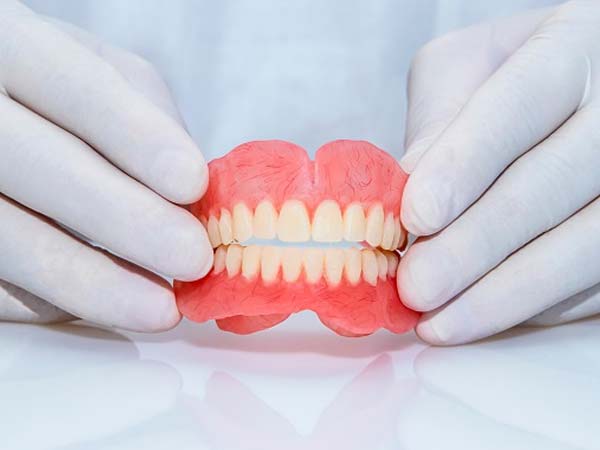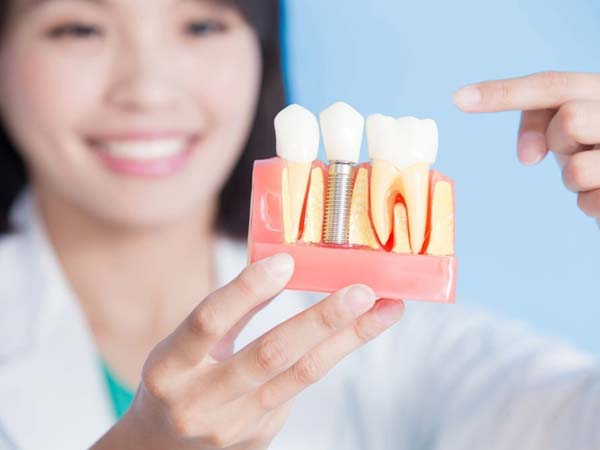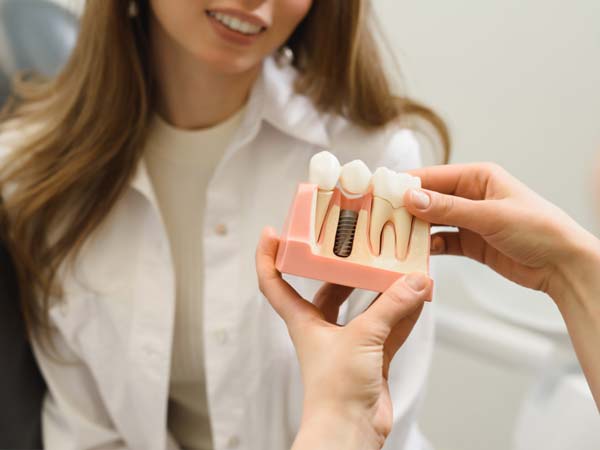
Cosmetic Dentistry: Enhancing Smiles, Boosting Confidence
Cosmetic dentistry is a specialized branch of dentistry that focuses on improving the aesthetic appearance of a person’s smile. With advancements in dental technology and techniques, cosmetic dentistry offers a wide range of procedures to address various dental concerns and help individuals achieve their dream smile. From teeth whitening and veneers to orthodontics and dental implants, cosmetic dentistry plays a crucial role in enhancing smiles and boosting confidence.
Common Cosmetic Dentistry Procedures:
- Teeth Whitening: Teeth whitening is one of the most popular and straightforward cosmetic dental procedures. It involves the use of bleaching agents to lighten the color of stained or discolored teeth, resulting in a brighter and more vibrant smile.
- Dental Veneers: Dental veneers are thin, custom-made shells that are bonded to the front surface of teeth to improve their appearance. Veneers can correct various issues, including tooth discoloration, chips, cracks, and gaps, providing a natural-looking and uniform smile.
- Dental Bonding: Dental bonding is a procedure in which a tooth-colored resin material is applied to the teeth and then shaped and polished to enhance their appearance. Bonding is an effective solution for repairing chipped, cracked, or discolored teeth, as well as closing small gaps.
- Orthodontic Treatment: Orthodontic treatment, such as braces or clear aligners, is used to straighten misaligned or crooked teeth. By gradually moving the teeth into their proper positions, orthodontics not only improves the smile’s aesthetics but also enhances oral health and functionality.
- Dental Implants: Dental implants are a permanent solution for replacing missing teeth. They consist of artificial tooth roots that are surgically placed into the jawbone, providing a stable foundation for dental crowns or bridges. Dental implants not only restore the appearance of a complete smile but also improve chewing ability and prevent bone loss.
- Dental Crowns: Dental crowns, also known as caps, are custom-made restorations that cover the entire visible portion of a tooth. They are used to restore the shape, size, strength, and appearance of damaged or severely decayed teeth, improving both the function and aesthetics of the smile.
- Gum Contouring: Gum contouring, also called gum reshaping, is a procedure that corrects an uneven gum line or excessive gum tissue. It involves removing or reshaping the gum tissue to create a balanced and harmonious smile.
Benefits of Cosmetic Dentistry:
- Improved Self-Confidence: Cosmetic dentistry can significantly enhance a person’s self-confidence by providing them with a beautiful and radiant smile. Feeling confident about their teeth and overall appearance boosts self-esteem and positively impacts social interactions.
- Enhanced Oral Health: Many cosmetic dental procedures not only improve aesthetics but also contribute to better oral health. For example, straightening crooked teeth improves oral hygiene by making it easier to clean the teeth and gums effectively.
- Natural-Looking Results: With advancements in dental materials and techniques, cosmetic dentistry offers natural-looking results. Restorations like veneers and dental implants are designed to mimic the appearance and function of natural teeth, ensuring a seamless and aesthetically pleasing smile.
- Long-Lasting Effects: Cosmetic dental procedures are designed to be durable and long-lasting. With proper care and regular dental visits, the results of cosmetic dentistry can withstand the test of time, allowing individuals to enjoy their enhanced smiles for years to come.
Consultation with a Cosmetic Dentist:
If you are considering cosmetic dentistry to improve your smile, it is essential to schedule a consultation with a qualified and experienced cosmetic dentist. During the consultation, the dentist will assess your oral health, discuss your aesthetic goals, and recommend the most suitable treatment options tailored to your needs.
In conclusion, cosmetic dentistry offers a wide range of procedures to enhance smiles and boost confidence. From teeth whitening and veneers to dental implants and orthodontics, these procedures can transform the appearance of teeth and create a smile that is both beautiful and healthy. With the help of a skilled cosmetic dentist, you can achieve the smile you’ve always desired and enjoy the numerous benefits that come with it.
FAQs (Frequently Asked Questions)
- Is cosmetic dentistry only about improving aesthetics? While cosmetic dentistry primarily focuses on enhancing the appearance of teeth, many procedures also offer functional benefits. For example, orthodontic treatment not only straightens teeth but also improves bite alignment and jaw function.
- Are cosmetic dental procedures painful? Most cosmetic dental procedures are performed under local anesthesia to ensure patient comfort. However, some procedures may cause mild discomfort or sensitivity during or after the treatment. Your dentist will discuss pain management options and address any concerns you may have.
- How long does cosmetic dentistry treatment take? The duration of treatment varies depending on the specific procedure and individual needs. Some procedures, such as teeth whitening, can be completed in a single visit, while others, like orthodontic treatment, may take several months or more.
- Are cosmetic dental procedures permanent? The longevity of cosmetic dental results depends on various factors, including the type of procedure, oral hygiene practices, and lifestyle habits. With proper care and maintenance, cosmetic dental restorations can last for many years.
- 5. Can anyone undergo cosmetic dentistry? In general, most individuals with good oral health are suitable candidates for cosmetic dentistry. However, it is essential to consult with a cosmetic dentist to determine the best treatment options based on your specific dental needs and goals.

Dentures: Restoring Your Smile and Oral Function
Dentures are a popular and effective solution for individuals who have lost multiple teeth or require full arch tooth replacement. These removable dental appliances are custom-made to fit comfortably in your mouth, providing you with a functional and natural-looking smile. Whether you have lost your teeth due to age, decay, gum disease, or injury, dentures can help restore your ability to chew, speak, and smile with confidence. Let’s explore what dentures are, the different types available, and the benefits they offer.
What Are Dentures?
Dentures are prosthetic devices designed to replace missing teeth and the surrounding tissues. They consist of artificial teeth made from durable materials such as porcelain or acrylic, which are attached to a base that resembles the color of the gums. Dentures are custom-made to fit your mouth precisely, ensuring optimal comfort and functionality.
Types of Dentures:
- Complete Dentures: Complete dentures are used when all the teeth in either the upper or lower arch are missing. They consist of a full set of artificial teeth attached to a gum-colored acrylic base. Complete dentures rely on suction and adhesive properties to stay in place.
- Partial Dentures: Partial dentures are recommended when some natural teeth remain in the upper or lower arch. They consist of artificial teeth attached to a metal or acrylic framework, which clasps onto the remaining teeth for stability. Partial dentures fill the gaps created by missing teeth, improving chewing ability and restoring aesthetics.
- Implant-Supported Dentures: Implant-supported dentures offer a more stable and secure option compared to conventional dentures. Dental implants are surgically placed into the jawbone, providing a solid foundation for the denture. The denture is then attached to the implants using special connectors, ensuring enhanced stability and preventing slippage.
The Denture Process:
- Consultation and Evaluation: The denture process begins with a consultation with your dentist. They will evaluate your oral health, discuss your tooth replacement goals, and determine the most suitable type of denture for your needs.
- Dental Impressions: Once the treatment plan is established, impressions of your mouth will be taken. These impressions serve as a mold for creating custom dentures that fit your unique oral structure.
- Tooth Extraction (if necessary): If any remaining natural teeth need to be extracted before denture placement, your dentist will perform the extractions in a comfortable and controlled manner. Temporary dentures may be provided during the healing period.
- Denture Fitting: Once your custom dentures are ready, they will be carefully fitted and adjusted to ensure a comfortable and secure fit. Your dentist will make necessary modifications to ensure proper bite alignment and aesthetics.
- Denture Care and Maintenance: Proper care and maintenance are crucial for the longevity and functionality of your dentures. Your dentist will provide instructions on how to clean and care for your dentures, including daily cleaning, removing them at night, and regular check-ups.
Benefits of Dentures:
- Restored Chewing and Speaking Ability: Dentures allow you to chew a wide variety of foods, improving your nutrition and overall well-being. They also help in restoring clear speech, eliminating the difficulties often faced with missing teeth.
- Enhanced Facial Aesthetics: Dentures provide support to your facial muscles, preventing the sunken-in appearance that can occur with tooth loss. They help maintain facial volume, restoring a youthful and natural appearance.
- Boosted Self-Confidence: Dentures can significantly enhance your smile, giving you the confidence to socialize, speak, and laugh without hesitation. They provide a functional and aesthetically pleasing solution for individuals with missing teeth.
- Affordability: Dentures are a cost-effective tooth replacement option compared to other alternatives. They offer a comprehensive solution for multiple missing teeth, providing functional and aesthetic benefits at a reasonable price.
- Improved Quality of Life: With dentures, you can enjoy improved oral function, enhanced aesthetics, and a renewed sense of confidence. You can smile, eat, and interact with others without worrying about the challenges posed by missing teeth.
Consultation with a Dentist:
If you are considering dentures as a tooth replacement option, it is important to consult with a skilled dentist who specializes in prosthodontics. They will assess your oral health, discuss your expectations, and develop a personalized treatment plan to restore your smile and oral function.
Conclusion:
Dentures offer a reliable and effective solution for individuals with missing teeth. Whether you require full arch replacement or need to replace a few missing teeth, dentures can help restore your smile and improve your quality of life. Consult with a professional dentist to explore the options and take the first step towards regaining your confident and functional smile.
FAQs (Frequently Asked Questions)
- How long does it take to get used to wearing dentures? It may take some time to adjust to wearing dentures. Initially, you may experience slight discomfort or soreness, but as your mouth muscles and tissues adapt, these issues should resolve. Follow your dentist’s instructions and be patient during the adjustment period.
- Can I sleep with my dentures in? It is generally recommended to remove your dentures while sleeping to give your gums and supporting tissues a chance to rest and recover. Removing your dentures at night also allows for proper cleaning and maintenance.
- How often should I clean my dentures? Dentures should be cleaned daily to remove food particles, plaque, and bacteria. Use a soft-bristle brush and non-abrasive denture cleaner to gently clean all surfaces of your dentures. Rinse them thoroughly before placing them back in your mouth.
- Are dentures a permanent solution? While dentures provide a long-lasting tooth replacement option, they may require adjustments or replacements over time. With proper care and regular dental check-ups, dentures can serve you well for many years.
- Can I eat normally with dentures? Yes, dentures enable you to eat a wide range of foods. However, it is recommended to start with soft foods and gradually introduce harder and chewier items. Chewing evenly on both sides of your mouth can help maintain denture stability while eating.

Pediatric Dentistry: Caring for Your Child’s Dental Health
Pediatric dentistry is a specialized field of dentistry that focuses on providing comprehensive dental care to infants, children, adolescents, and individuals with special healthcare needs. It is essential to prioritize your child’s oral health from an early age to promote healthy teeth and gums, prevent dental problems, and establish good oral hygiene habits. Let’s explore the significance of pediatric dentistry and how it contributes to your child’s overall well-being.
The Importance of Pediatric Dentistry:
- Early Dental Care: Pediatric dentistry emphasizes the importance of early dental care, starting from the eruption of the first tooth. Regular dental check-ups allow the dentist to monitor your child’s oral development, address any concerns, and provide guidance on proper oral hygiene practices.
- Prevention of Dental Issues: Pediatric dentists are trained to identify and prevent common dental issues in children, such as tooth decay and gum disease. They educate parents and children about the importance of a balanced diet, proper oral hygiene, fluoride treatments, and dental sealants to protect against cavities.
- Child-Friendly Environment: Pediatric dental offices are designed to create a welcoming and child-friendly environment. The dental team is experienced in working with children and utilizes techniques to ensure their comfort and minimize anxiety during dental visits. This helps foster positive dental experiences and builds trust with the dentist.
- Specialized Care for Unique Needs: Pediatric dentists are equipped to handle the unique needs of children, including those with special healthcare requirements. They have expertise in treating developmental issues, oral habits (such as thumb sucking), and providing dental care to children with physical, intellectual, or emotional disabilities.
Common Services Provided by Pediatric Dentists:
- Dental Examinations: Regular dental check-ups allow the pediatric dentist to assess your child’s oral health, monitor tooth eruption, and identify any potential dental problems early on. These visits also provide an opportunity to educate parents and children about proper oral hygiene techniques.
- Preventive Care: Pediatric dentists focus on preventive measures to protect your child’s teeth. This includes dental cleanings, fluoride treatments, dental sealants, and nutritional guidance to promote healthy habits and reduce the risk of tooth decay.
- Treatment of Dental Issues: If dental problems arise, pediatric dentists offer a range of treatments tailored to children’s needs. These may include dental fillings, pulpotomies (baby tooth root canal treatment), extractions, and space maintainers to ensure proper tooth alignment.
- Orthodontic Evaluation: Pediatric dentists can assess your child’s orthodontic needs and refer them to an orthodontist if necessary. Early evaluation allows for timely intervention in cases of misaligned teeth or improper jaw growth.
Promoting Lifelong Dental Health:
Pediatric dentistry plays a crucial role in establishing a strong foundation for your child’s dental health. By providing comprehensive care, preventive measures, and education, pediatric dentists aim to promote optimal oral health and create positive dental experiences for children. Early and regular visits to a pediatric dentist set the stage for a lifetime of healthy smiles.
FAQs (Frequently Asked Questions)
- When should my child have their first dental visit? The American Academy of Pediatric Dentistry recommends that children have their first dental visit by their first birthday or within six months of the eruption of their first tooth. Early visits help establish a dental home, familiarize your child with the dentist, and ensure proper oral health care from the start.
- Are dental X-rays safe for children? Dental X-rays, when necessary, are generally safe for children. Pediatric dentists follow strict guidelines to minimize radiation exposure and use lead aprons and thyroid collars for additional protection. The frequency of X-rays is determined based on your child’s specific needs and risk factors.
- How can I help my child maintain good oral hygiene at home? Encourage regular brushing with a soft-bristled toothbrush and fluoride toothpaste appropriate for your child’s age. Help your child brush their teeth until they can do so effectively on their own. Additionally, promote healthy eating habits, limit sugary snacks and drinks, and encourage drinking water throughout the day.
- Can thumb sucking or pacifier use affect my child’s dental health? Thumb sucking and pacifier use are common habits in young children. Prolonged or vigorous habits may impact dental development. Pediatric dentists can provide guidance on managing these habits and their effects on oral health.
- At what age should my child start orthodontic treatment, if needed? The age for orthodontic treatment varies depending on individual needs. Early orthodontic evaluations are recommended around the age of 7 to identify potential issues and plan for timely intervention if necessary. The orthodontist will determine the appropriate timing for treatment based on your child’s specific situation.

Orthodontics: Achieving a Beautiful and Healthy Smile with Proper Teeth Alignment
Orthodontics is a specialized branch of dentistry that focuses on correcting misaligned teeth and jaw irregularities. It involves the diagnosis, prevention, and treatment of dental and facial irregularities to enhance both the aesthetics and functionality of the smile. Orthodontic treatment can address various issues, such as crooked teeth, overcrowding, overbite, underbite, and gaps between teeth. Let’s delve into orthodontics and understand how it can help you achieve a beautiful and healthy smile.
The Importance of Orthodontic Treatment:
- Improved Dental Alignment: Orthodontic treatment aims to align the teeth properly, correcting issues like crowding or spacing. By straightening the teeth, orthodontics enhances their appearance and creates a more harmonious smile.
- Enhanced Bite Function: Orthodontic treatment also focuses on correcting bite problems, such as overbite (when the upper front teeth excessively overlap the lower teeth) or underbite (when the lower teeth protrude past the upper teeth). These issues can lead to difficulties in chewing, speaking, and overall oral function. Orthodontics helps restore proper bite alignment and improves functionality.
- Oral Health Benefits: Misaligned teeth can pose challenges in maintaining proper oral hygiene. Crooked or crowded teeth may be more challenging to clean effectively, increasing the risk of tooth decay, gum disease, and other dental problems. Orthodontic treatment aligns the teeth, making them easier to clean and reducing the chances of oral health issues.
- Boosted Self-Confidence: A straight and beautiful smile can significantly enhance one’s self-confidence and self-esteem. Orthodontic treatment not only improves dental health and functionality but also provides a positive impact on a person’s overall appearance and social interactions.
Common Orthodontic Treatment Options:
- Braces: Traditional braces consist of metal brackets that are bonded to the teeth and connected with wires. Over time, the gentle pressure applied by the wires gradually moves the teeth into their desired positions. Braces can effectively address a wide range of orthodontic issues and are suitable for patients of all ages.
- Clear Aligners: Clear aligners, such as Invisalign®, are a popular alternative to traditional braces. These custom-made, transparent trays are virtually invisible when worn and offer greater convenience and flexibility. Clear aligners are removable, allowing for easy oral hygiene maintenance and the freedom to enjoy food without restrictions.
- Lingual Braces: Lingual braces are similar to traditional braces, but instead of being placed on the front surface of the teeth, they are fixed to the back surface, making them virtually invisible from the outside. Lingual braces are an excellent option for individuals who desire discreet orthodontic treatment.
- Retainers: After completing orthodontic treatment, retainers are often prescribed to maintain the teeth in their new positions. Retainers help prevent relapse and ensure long-term stability of the orthodontic results.
Seeking Orthodontic Treatment:
If you are considering orthodontic treatment, it is essential to schedule a consultation with an experienced orthodontist. During the initial visit, the orthodontist will conduct a comprehensive examination, which may include X-rays, photographs, and digital impressions of your teeth. This evaluation will help determine the most suitable treatment plan for your specific needs.
The Orthodontic Treatment Process:
- Treatment Planning: After the initial examination, the orthodontist will develop a personalized treatment plan tailored to address your specific concerns and goals. They will discuss the recommended treatment options, duration of treatment, and associated costs.
- Orthodontic Appliances: Depending on the chosen treatment modality, you will be fitted with braces, clear aligners, or other orthodontic appliances. The orthodontist will guide you on their proper use and maintenance.
- Regular Follow-up Visits: Throughout the treatment process, you will have regular follow-up visits with your orthodontist. These appointments allow for adjustments, monitoring progress, and addressing any concerns or questions you may have.
- Retention Phase: After completing the active orthodontic treatment, you will enter the retention phase. During this period, you will be prescribed retainers to wear as instructed by your orthodontist. Retainers help maintain the corrected tooth positions and prevent relapse.
Transform Your Smile with Orthodontics:
Orthodontic treatment offers numerous benefits, from improving dental alignment and bite function to enhancing oral health and boosting self-confidence. Whether you opt for traditional braces, clear aligners, or lingual braces, consulting with an experienced orthodontist will ensure you receive personalized treatment and achieve the smile of your dreams. Take the first step towards a beautiful, healthy smile by scheduling an orthodontic consultation today.
FAQs (Frequently Asked Questions)
- At what age should orthodontic treatment be initiated? Orthodontic treatment can be started at any age, but the ideal time depends on the individual’s specific needs. In general, orthodontic evaluations are recommended for children around the age of 7 to detect any potential orthodontic issues early. However, orthodontic treatment can be effective for patients of all ages, including teenagers and adults.
- How long does orthodontic treatment take? The duration of orthodontic treatment varies depending on the complexity of the case, the chosen treatment modality, and individual factors. On average, treatment can range from several months to a few years. Your orthodontist will provide an estimated treatment timeline during the initial consultation.
- Are there any dietary restrictions during orthodontic treatment? Certain dietary restrictions may apply, especially if you opt for traditional braces. Hard, sticky, or chewy foods that can damage or get stuck in the braces should be avoided. Clear aligners, on the other hand, can be removed during meals, allowing for more flexibility in food choices.
- Will orthodontic treatment cause discomfort? It is common to experience some discomfort or pressure during the initial days or after adjustments. However, this discomfort is usually temporary and can be managed with over-the-counter pain relievers and orthodontic wax to alleviate any irritations caused by brackets or wires.
- How do I maintain oral hygiene with orthodontic appliances? Maintaining good oral hygiene is crucial during orthodontic treatment. Your orthodontist will provide instructions on how to brush and floss effectively with braces or aligners. Additional tools, such as interdental brushes or water flossers, may be recommended to clean hard-to-reach areas. Regular dental check-ups are also important to ensure optimal oral health during treatment.

Oral Surgery: Restoring Oral Health and Function with Surgical Expertise
Oral surgery encompasses a range of procedures that address various conditions and concerns affecting the mouth, jaws, and facial structures. From tooth extraction and wisdom teeth removal to corrective jaw surgery and dental implant placement, oral surgery plays a crucial role in restoring oral health, relieving pain, and enhancing overall well-being. Let’s explore oral surgery in more detail and understand how it can help you maintain a healthy and functional smile.
Common Oral Surgery Procedures:
- Tooth Extraction: Tooth extraction is the removal of a severely damaged, decayed, or infected tooth. It is often performed when a tooth cannot be saved through other dental treatments, such as root canal therapy. Tooth extraction helps alleviate pain, prevent the spread of infection, and create space for orthodontic treatment or dental prosthetics.
- Wisdom Teeth Removal: Wisdom teeth, also known as third molars, often erupt in the late teens or early twenties. However, due to inadequate space in the jaw or improper eruption, wisdom teeth can cause various problems, including pain, infection, and damage to neighboring teeth. Wisdom teeth removal is a common oral surgery procedure to prevent these complications and maintain oral health.
- Dental Implant Placement: Dental implants are titanium posts that are surgically placed into the jawbone to replace missing teeth. The oral surgery procedure involves the precise placement of the implant in the jawbone, allowing for osseointegration (the fusion of the implant with the bone) to occur. Dental implants provide a durable and natural-looking solution for replacing missing teeth and restoring oral function.
- Corrective Jaw Surgery: Corrective jaw surgery, also known as orthognathic surgery, is performed to address irregularities in the jaws and facial structures. It can help correct issues such as malocclusion (misaligned bite), jaw misalignment, temporomandibular joint (TMJ) disorders, and facial asymmetry. Corrective jaw surgery aims to improve oral function, facial aesthetics, and overall oral health.
- Treatment of Oral Pathologies: Oral surgery also encompasses the diagnosis and treatment of various oral pathologies, including cysts, tumors, and infections. Surgical intervention may be necessary to remove these abnormalities and promote oral health.
The Oral Surgery Process:
- Consultation and Evaluation: During your initial consultation, the oral surgeon will review your medical and dental history, perform a comprehensive oral examination, and order any necessary diagnostic imaging, such as X-rays or CT scans. This evaluation will help determine the most appropriate treatment plan for your specific condition.
- Preparation and Planning: Once a treatment plan is established, the oral surgeon will discuss the procedure, address any concerns or questions you may have, and provide pre-operative instructions. They will also explain the anesthesia options available, such as local anesthesia, intravenous sedation, or general anesthesia, to ensure your comfort and safety during the surgery.
- Surgical Procedure: On the day of the surgery, the oral surgeon will administer the chosen anesthesia to ensure a pain-free experience. The procedure will be performed with precision and expertise, taking into account your unique oral health needs. The duration of the surgery will depend on the complexity of the procedure.
- Recovery and Post-operative Care: After the surgery, you will be given detailed post-operative instructions to promote healing and minimize discomfort. This may include pain management strategies, dietary restrictions, oral hygiene guidelines, and follow-up appointments to monitor your progress.
Benefits of Oral Surgery:
- Improved Oral Health: Oral surgery helps address oral conditions that may be causing pain, discomfort, or infection. By removing diseased or damaged teeth, treating oral pathologies, or correcting jaw irregularities, oral surgery restores oral health and function.
- Enhanced Aesthetics: Some oral surgery procedures, such as corrective jaw surgery or dental implant placement, can improve facial aesthetics and create a more harmonious facial profile. This can boost self-confidence and improve overall facial appearance.
- Relief from Discomfort: Oral surgery procedures can provide relief from chronic pain, discomfort, or functional limitations caused by dental conditions, jaw irregularities, or oral pathologies. This can significantly improve your quality of life and overall well-being.
- Long-lasting Results: Many oral surgery procedures offer long-lasting results, providing a durable solution for various oral health concerns. Dental implants, for example, can last a lifetime with proper care and maintenance.
- Comprehensive Treatment: Oral surgery is often an essential component of comprehensive dental treatment plans. By addressing underlying oral health issues, oral surgery sets the stage for successful restorative and cosmetic dental treatments.
Trust the Expertise of an Oral Surgeon:
Oral surgery requires specialized knowledge, skills, and experience. It is essential to seek treatment from a qualified oral surgeon who can provide comprehensive care and ensure your safety throughout the procedure. An experienced oral surgeon will work closely with you, addressing your concerns, and customizing a treatment plan to meet your specific needs.
Maintain Your Oral Health with Oral Surgery:
Oral surgery plays a vital role in maintaining oral health, restoring functionality, and improving aesthetics. Whether you require a tooth extraction, wisdom teeth removal, dental implant placement, corrective jaw surgery, or treatment for oral pathologies, consult with an experienced oral surgeon to explore your treatment options. Take the first step towards a healthy, functional, and beautiful smile by scheduling an oral surgery consultation today.
FAQs (Frequently Asked Questions)
- Is oral surgery painful? During oral surgery, you will be under the effect of anesthesia, ensuring that you do not experience any pain during the procedure. After the surgery, some discomfort or swelling may be present, but your oral surgeon will provide you with appropriate pain management instructions and medication.
- How long does it take to recover from oral surgery? The recovery period varies depending on the specific procedure and individual factors. It may take a few days to several weeks to recover fully. Your oral surgeon will provide you with post-operative instructions, including tips on managing pain, swelling, and promoting healing.
- Are there any risks associated with oral surgery? As with any surgical procedure, there are potential risks and complications associated with oral surgery. However, these risks are minimized by choosing a skilled and experienced oral surgeon, following pre- and post-operative instructions, and attending all recommended follow-up appointments.
- Will I be able to eat normally after oral surgery? Your ability to eat normally may be temporarily affected depending on the type of oral surgery you undergo. Your oral surgeon will provide specific dietary guidelines and recommendations to ensure a smooth recovery. In most cases, you will gradually be able to resume a normal diet as you heal.
- When should I consult an oral surgeon? You should consult an oral surgeon if you have dental conditions that require surgical intervention, such as impacted wisdom teeth, severe tooth decay, jaw irregularities, oral pathologies, or the need for dental implants. Your general dentist may refer you to an oral surgeon if necessary.

Root Canal Treatment: Saving Your Natural Tooth
Root canal treatment, also known as endodontic treatment, is a dental procedure performed to treat an infected or damaged tooth pulp. Contrary to common misconceptions, root canal treatment is not a painful procedure but rather a solution to relieve tooth pain and save your natural tooth. Let’s delve into the details of root canal treatment and understand its significance in preserving your oral health.
Understanding Root Canal Treatment:
- When is Root Canal Treatment Needed? Root canal treatment becomes necessary when the pulp inside your tooth becomes infected or inflamed. This can occur due to deep decay, tooth trauma, cracks, repeated dental procedures, or gum disease. Signs that you may need root canal treatment include persistent toothache, sensitivity to hot or cold, swelling, and tenderness in the surrounding gums.
- The Procedure: Root canal treatment involves removing the infected or damaged pulp from the tooth’s interior. The tooth is then cleaned, disinfected, and sealed to prevent further infection. In some cases, a dental crown is placed over the treated tooth to restore its strength and functionality.
- Preserving Your Natural Tooth: Root canal treatment aims to save your natural tooth, which is always the best option when possible. Retaining your natural tooth helps maintain proper chewing function, prevents neighboring teeth from shifting, and preserves the natural aesthetics of your smile.
- Pain-Free Procedure: Contrary to popular belief, modern root canal treatment is virtually painless. With the use of local anesthesia, you will experience minimal discomfort during the procedure. In fact, root canal treatment alleviates the severe toothache caused by the infected pulp, providing relief once the treatment is completed.
- Long-Term Success: When performed by a skilled dentist or endodontist, root canal treatment has a high success rate. With proper care, including good oral hygiene practices and regular dental check-ups, the treated tooth can last a lifetime.
The Process of Root Canal Treatment:
- Diagnosis: Your dentist will perform a thorough examination, including X-rays, to determine the extent of the infection and assess the condition of the tooth’s root canal.
- Anesthesia: Local anesthesia is administered to ensure a painless procedure. Your dentist will ensure your comfort throughout the treatment.
- Access and Cleaning: An access hole is created in the tooth, allowing the dentist to remove the infected pulp. The canals are carefully cleaned, shaped, and disinfected to remove any bacteria or debris.
- Filling and Sealing: The canals are filled with a biocompatible material called gutta-percha, which seals the space and prevents reinfection. In some cases, a temporary filling may be placed until the tooth is fully restored.
- Restoration: To restore the tooth’s functionality and protect it from further damage, a dental crown or filling is placed. This provides strength and support to the treated tooth.
Caring for a Treated Tooth:
After root canal treatment, it’s essential to maintain good oral hygiene practices to ensure the long-term success of the treated tooth:
- Brush your teeth at least twice a day with a fluoride toothpaste.
- Floss daily to remove plaque and food particles from between the teeth.
- Visit your dentist regularly for check-ups and professional cleanings.
- Avoid biting or chewing on hard foods or objects that may damage the restored tooth.
By following these guidelines and maintaining regular dental care, you can preserve the health and function of your treated tooth for years to come.
FAQs (Frequently Asked Questions)
- Is root canal treatment painful? No, root canal treatment is not painful. With the use of local anesthesia, the procedure is virtually painless. You may experience some mild discomfort after the treatment, but this can be managed with over-the-counter pain relievers.
- Are there alternatives to root canal treatment? The main alternative to root canal treatment is tooth extraction. However, it is generally recommended to save the natural tooth whenever possible, as extraction may lead to other dental issues and require additional treatments like dental implants or bridges.
- How long does a root canal treatment take? The duration of root canal treatment depends on the complexity of the case. Simple cases may be completed in one visit, while more complex cases may require multiple visits. Your dentist will provide an estimated timeline based on your specific situation.
- Can a tooth that has undergone root canal treatment get reinfected? In rare cases, a treated tooth can get reinfected. This can occur if the sealing of the canals is compromised or if new infection reaches the treated tooth. Regular dental check-ups and maintaining good oral hygiene practices can help prevent reinfection.
- How much does root canal treatment cost? The cost of root canal treatment can vary depending on various factors, including the tooth’s location, complexity of the case, and additional procedures required. It’s best to consult with your dentist, who can provide a detailed cost estimate based on your specific needs.

Periodontics: Maintaining Healthy Gums for a Strong Foundation
Periodontics is a specialized branch of dentistry that focuses on the prevention, diagnosis, and treatment of diseases and conditions affecting the gums and supporting structures of the teeth. Healthy gums are essential for maintaining a strong foundation for your teeth, as they provide support and protection against harmful bacteria. Let’s explore the significance of periodontics and how it contributes to your overall oral health.
The Importance of Periodontics:
- Prevention and Early Detection: Periodontists play a crucial role in preventing gum diseases such as gingivitis and periodontitis. They emphasize the importance of regular dental check-ups and professional cleanings to remove plaque and tartar buildup. Early detection of gum problems allows for prompt treatment and prevents further progression of the disease.
- Treatment of Gum Diseases: Periodontists are experts in diagnosing and treating various gum diseases. They employ non-surgical and surgical techniques to eliminate infection, reduce inflammation, and restore gum health. These treatments may include scaling and root planing (deep cleaning), gum grafting, pocket reduction surgery, and guided tissue regeneration.
- Dental Implant Placement: Periodontists are extensively trained in the placement and maintenance of dental implants. They assess the suitability of dental implants as a replacement for missing teeth and perform the surgical procedures necessary for implant placement. Dental implants provide a stable and long-lasting solution for tooth replacement.
- Management of Complex Cases: Periodontists handle complex cases involving severe gum diseases or conditions that require specialized care. They collaborate with other dental specialists to develop comprehensive treatment plans and provide optimal care for patients with advanced periodontal issues.
Common Services Provided by Periodontists:
- Comprehensive Periodontal Evaluation: Periodontists conduct thorough examinations of the gums, teeth, and surrounding tissues to assess their health. They evaluate gum attachment levels, measure pocket depths, and assess bone density through X-rays to diagnose gum diseases accurately.
- Scaling and Root Planing: This non-surgical procedure involves removing plaque and tartar from above and below the gumline. It helps eliminate bacteria, reduce inflammation, and smooth the tooth roots to promote gum reattachment and prevent further progression of gum disease.
- Gum Grafting: In cases of gum recession, where the gum tissue has pulled away from the tooth roots, periodontists perform gum grafting procedures. This involves taking tissue from another area of the mouth or using synthetic materials to cover exposed tooth roots and restore a healthy gumline.
- Dental Implant Placement and Maintenance: Periodontists specialize in dental implant procedures, including implant placement, bone grafting, and implant restoration. They ensure proper integration of the implant with the jawbone and provide ongoing maintenance and care for long-term implant success.
Maintaining Healthy Gums:
In addition to professional periodontal care, maintaining healthy gums requires a consistent oral hygiene routine at home. This includes:
- Brushing your teeth at least twice a day with a soft-bristled toothbrush and fluoride toothpaste.
- Flossing daily to remove plaque and food particles from between the teeth and along the gumline.
- Using an antimicrobial mouthwash to reduce bacterial growth and freshen breath.
- Eating a balanced diet rich in fruits, vegetables, and whole grains while limiting sugary snacks and beverages.
Regular visits to a periodontist and practicing good oral hygiene habits are essential for preventing gum diseases, maintaining healthy gums, and preserving the longevity of your teeth.
FAQs (Frequently Asked Questions)
- What are the signs of gum disease? Common signs of gum disease include red, swollen, or tender gums, bleeding gums during brushing or flossing, persistent bad breath, receding gums, and loose or shifting teeth. If you notice any of these symptoms, it’s important to schedule an appointment with a periodontist for evaluation and treatment.
- Is gum disease reversible? Gingivitis, the early stage of gum disease, is reversible with proper dental care and regular professional cleanings. However, advanced periodontitis, characterized by significant gum and bone damage, is not reversible but can be managed to prevent further progression.
- How often should I visit a periodontist? The frequency of visits to a periodontist depends on your specific needs and the health of your gums. In general, individuals with a history of gum disease or other periodontal concerns may require more frequent visits, while those with healthy gums can schedule regular check-ups every six to twelve months.
- Does gum disease have any systemic health implications? Yes, gum disease has been linked to several systemic health conditions, including heart disease, diabetes, respiratory diseases, and complications during pregnancy. Maintaining healthy gums through periodontal care contributes to overall well-being and reduces the risk of developing these systemic health issues.
- Can I prevent gum disease at home? While professional periodontal care is crucial, practicing good oral hygiene habits at home is equally important. By brushing and flossing diligently, eating a balanced diet, and avoiding tobacco use, you can significantly reduce your risk of gum disease and maintain optimal oral health.

General Dentistry: Comprehensive Oral Health Care for a Bright Smile
General dentistry plays a crucial role in maintaining your oral health and preserving your beautiful smile. It encompasses a wide range of dental services aimed at preventing, diagnosing, and treating common dental issues. From regular check-ups and cleanings to restorative treatments, general dentistry provides the foundation for a healthy mouth and a confident smile. Let’s explore the importance of general dentistry and the services it offers.
Importance of General Dentistry:
- Preventive Care: General dentistry focuses on preventing dental problems before they occur. Regular dental check-ups allow your dentist to detect early signs of decay, gum disease, and other oral health issues. With preventive measures such as professional cleanings, dental sealants, and fluoride treatments, general dentistry helps maintain optimal oral health.
- Early Diagnosis: Through routine examinations and diagnostic techniques like X-rays, general dentistry enables early detection of dental problems. Timely diagnosis allows for prompt treatment, preventing the progression of oral diseases and minimizing the need for extensive interventions.
- Treatment Planning: General dentistry involves comprehensive treatment planning based on your individual needs. Your dentist will develop a personalized treatment plan to address any existing dental issues, such as cavities, gum disease, or tooth loss, and restore your oral health.
Services Offered in General Dentistry:
- Dental Cleanings and Examinations: Regular dental cleanings and examinations are fundamental components of general dentistry. During these visits, your dentist will clean your teeth, remove plaque and tartar buildup, and examine your oral cavity for any signs of dental problems.
- Dental Fillings: If you have cavities, your dentist will utilize tooth-colored dental fillings to restore the affected teeth. These fillings blend seamlessly with your natural teeth, providing both functional and aesthetic benefits.
- Gum Disease Treatment: General dentistry addresses gum disease, a common oral health issue. Non-surgical treatments, such as scaling and root planing, are often recommended to remove plaque and tartar from below the gumline and promote gum tissue healing.
- Root Canal Therapy: When the inner pulp of a tooth becomes infected or damaged, root canal therapy can save the tooth from extraction. This procedure involves removing the infected pulp, cleaning the root canal, and sealing it to prevent reinfection.
- Tooth Extractions: In cases where a tooth is severely damaged, decayed, or causing overcrowding, your dentist may perform tooth extractions. They will ensure that the extraction procedure is comfortable and may recommend tooth replacement options if necessary.
- Dental Crowns and Bridges: Dental crowns are used to restore and protect damaged teeth, while dental bridges are utilized to replace missing teeth. These restorations provide both functional and aesthetic benefits, allowing you to regain a natural-looking and fully functioning smile.
Maintaining Your Oral Health:
In addition to receiving regular dental care, it is essential to maintain good oral hygiene practices at home. This includes brushing your teeth at least twice a day, flossing daily, and using mouthwash to control bacteria and freshen your breath. Your dentist will provide guidance on proper oral hygiene techniques and may recommend additional preventive measures, such as dental sealants or fluoride treatments, based on your individual needs.
Conclusion:
General dentistry is the foundation of excellent oral health. By prioritizing preventive care, early diagnosis, and comprehensive treatment planning, general dentistry aims to preserve your natural teeth, prevent dental issues, and ensure a bright and healthy smile. Regular visits to a general dentist are crucial for maintaining optimal oral health and enjoying the benefits of a confident and beautiful smile.
FAQs (Frequently Asked Questions)
- How often should I visit a general dentist? It is generally recommended to visit a general dentist every six months for routine dental cleanings and examinations. However, the frequency of visits may vary based on your oral health needs. Your dentist will provide personalized recommendations for your specific situation.
- Are dental X-rays safe? Dental X-rays are considered safe and involve minimal radiation exposure. Modern dental practices utilize digital X-rays, which further minimize radiation dosage. Dentists take necessary precautions to ensure patient safety during X-ray procedures.
- What should I do in a dental emergency? In the event of a dental emergency, such as severe tooth pain, a knocked-out tooth, or a broken tooth, it is important to seek immediate dental care. Contact your general dentist or an emergency dental clinic to receive prompt treatment.
- Can general dentists provide cosmetic dental treatments? Yes, many general dentists offer cosmetic dental treatments such as teeth whitening, dental veneers, and composite bonding. However, the extent of cosmetic services may vary among practitioners. It’s best to consult with your general dentist to discuss your cosmetic dental needs.
- Does dental insurance cover general dentistry services? Dental insurance often covers a portion of general dentistry services, including dental cleanings, examinations, and fillings. However, the coverage can vary depending on your insurance plan. It’s recommended to check with your insurance provider or dental office for specific coverage details.

Dental Implants: Restoring Your Smile and Confidence
Dental implants have revolutionized the field of restorative dentistry, offering a reliable and long-lasting solution for replacing missing teeth. Whether you have lost a tooth due to injury, decay, or other reasons, dental implants provide a natural-looking and functional replacement that can restore your smile and boost your confidence. Let’s explore what dental implants are, how they work, and their numerous benefits.
What Are Dental Implants?
Dental implants are artificial tooth roots made of biocompatible materials, typically titanium. They are surgically placed into the jawbone to provide a sturdy foundation for prosthetic teeth. Once the implant fuses with the surrounding bone through a process called osseointegration, it becomes a permanent and secure anchor for the replacement tooth or teeth.
The Dental Implant Procedure:
- Initial Consultation: The dental implant process begins with an initial consultation. During this visit, the dentist will evaluate your oral health, take necessary dental imaging, and discuss your treatment goals.
- Implant Placement: The next step is the surgical placement of the dental implant. This procedure is typically performed under local anesthesia or conscious sedation to ensure your comfort. The dentist will make a small incision in the gum tissue to access the jawbone and carefully insert the implant.
- Osseointegration: After implant placement, a healing period of several weeks to a few months is required for osseointegration to occur. During this time, the implant integrates with the surrounding bone, creating a strong and stable foundation.
- Abutment Placement: Once osseointegration is complete, a connector called an abutment is attached to the implant. The abutment acts as a link between the implant and the prosthetic tooth.
- Prosthetic Restoration: Finally, a custom-made dental crown, bridge, or denture is securely attached to the abutment, completing the dental implant restoration. The prosthetic tooth or teeth are designed to match the color, shape, and size of your natural teeth, providing a seamless and aesthetically pleasing result.
Benefits of Dental Implants:
- Improved Appearance: Dental implants look and feel like natural teeth, enhancing your smile’s appearance and restoring facial aesthetics. They blend seamlessly with your existing teeth, giving you the confidence to smile, speak, and eat without hesitation.
- Enhanced Functionality: Unlike removable dentures, dental implants provide optimal biting and chewing capabilities. They are securely anchored in the jawbone, allowing you to enjoy a wide range of foods and speak clearly without worrying about your teeth shifting or slipping.
- Durability and Longevity: With proper care and maintenance, dental implants can last a lifetime. They are highly durable and resistant to decay, offering a long-term solution for tooth replacement.
- Preservation of Jawbone Health: When a tooth is lost, the underlying jawbone can deteriorate over time. Dental implants stimulate bone growth and prevent bone loss, preserving the integrity and strength of the jawbone.
- Convenience and Comfort: Unlike removable dentures, dental implants eliminate the need for messy adhesives and special cleaning routines. They become a permanent part of your mouth, providing convenience and comfort in your daily life.
Consultation with an Implant Specialist:
If you are considering dental implants, it is essential to consult with a skilled implant specialist or prosthodontist. They will evaluate your oral health, discuss your treatment options, and create a personalized plan tailored to your specific needs and goals.
Conclusion:
Dental implants are a remarkable solution for replacing missing teeth and restoring your smile’s functionality and aesthetics. With their natural appearance, durability, and ability to improve oral health, dental implants offer a life-changing opportunity for individuals seeking a permanent tooth replacement option.
FAQs (Frequently Asked Questions)
- Are dental implants painful? The dental implant procedure is typically performed under local anesthesia, ensuring that you experience little to no pain during the process. Some discomfort or mild soreness may occur after the surgery, but it can be managed with prescribed pain medications.
- How long does the dental implant process take? The dental implant process can take several months to complete, including the healing period for osseointegration. The exact timeline varies for each individual based on factors such as the number of implants, bone quality, and overall oral health.
- Am I a suitable candidate for dental implants? In general, most healthy individuals with adequate jawbone density can be considered candidates for dental implants. However, a thorough evaluation by an implant specialist is necessary to determine your eligibility and develop a personalized treatment plan.
- How do I care for dental implants? Caring for dental implants is similar to caring for natural teeth. It involves regular brushing, flossing, and routine dental check-ups. Maintaining good oral hygiene practices and avoiding habits like smoking are essential for the long-term success of dental implants.
- 5. Can dental implants replace multiple missing teeth? Yes, dental implants can be used to replace a single tooth, multiple teeth, or even a full arch of teeth. Depending on your specific needs, your implant specialist will recommend the most suitable treatment option, such as implant-supported bridges or implant-supported dentures.

Single Tooth Implant: Restoring Your Smile with a Natural Replacement
A single tooth implant is a modern dental solution that offers a reliable and aesthetically pleasing replacement for a missing tooth. Whether you’ve lost a tooth due to injury, decay, or other dental issues, a single tooth implant can restore your smile and provide functional benefits. Let’s explore the details of single tooth implants and how they can enhance your oral health and confidence.
Understanding Single Tooth Implants:
- What is a Single Tooth Implant? A single tooth implant is a dental restoration that replaces a missing tooth by mimicking the natural tooth structure. It consists of three main components: the implant, the abutment, and the crown. The implant is a small titanium post that is surgically placed into the jawbone, acting as a sturdy foundation for the replacement tooth.
- Preserving Jawbone Health: When a tooth is lost, the underlying jawbone can start to deteriorate over time. By placing a dental implant in the empty space, the implant stimulates the jawbone and helps preserve its strength and density. This prevents bone loss and maintains the overall structure and support of your facial features.
- Natural Look and Feel: A single tooth implant closely replicates the appearance and function of a natural tooth. The custom-made crown, which is securely attached to the implant, is designed to match the color, shape, and size of your surrounding teeth, creating a seamless and natural-looking smile.
- Enhanced Chewing and Speaking: A missing tooth can affect your ability to chew properly and articulate certain sounds. With a single tooth implant, you can regain the full functionality of your bite, allowing you to enjoy a wide range of foods and speak with clarity and confidence.
The Process of Getting a Single Tooth Implant:
- Initial Consultation: During your initial consultation, your dentist will evaluate your oral health, discuss your specific needs and concerns, and determine if you are a suitable candidate for a single tooth implant.
- Implant Placement: The implant placement is performed by a skilled dental professional. The titanium implant is surgically inserted into the jawbone, where it fuses with the bone through a process called osseointegration. This creates a stable and durable foundation for the replacement tooth.
- Abutment Attachment: Once the implant has fully integrated with the jawbone, a small connector called an abutment is placed on top of the implant. The abutment serves as a support structure for the crown and ensures a secure fit.
- Custom Crown Placement: After the gum tissues have healed, a custom-made crown is fabricated to match your natural teeth in color, shape, and size. The crown is then attached to the abutment, providing a functional and aesthetically pleasing replacement for your missing tooth.
Caring for Your Single Tooth Implant:
Maintaining good oral hygiene is essential for the long-term success of your single tooth implant:
- Brush your teeth at least twice a day with a soft-bristled toothbrush and fluoride toothpaste.
- Floss daily to remove plaque and debris from between the teeth and around the implant.
- Visit your dentist regularly for check-ups and professional cleanings.
- Avoid habits such as smoking or chewing on hard objects, as they can negatively impact the implant’s longevity.
By following these guidelines and practicing proper oral care, your single tooth implant can provide you with a durable and natural-looking tooth replacement that can last for many years.
FAQs (Frequently Asked Questions)
- How long does the process of getting a single tooth implant take? The overall treatment time can vary depending on factors such as the individual’s healing ability and the need for any additional procedures. On average, the process can take a few months from the initial implant placement to the final placement of the crown.
- Is getting a single tooth implant a painful procedure? The implant placement procedure itself is typically performed under local anesthesia, ensuring that you experience little to no discomfort. After the procedure, you may experience mild soreness or discomfort, which can be managed with over-the-counter pain relievers.
- How long do single tooth implants last? With proper care and regular dental visits, single tooth implants have the potential to last a lifetime. However, it’s important to note that the longevity of an implant depends on individual factors, including oral hygiene practices, overall health, and lifestyle habits.
- Can a single tooth implant be placed immediately after tooth extraction? In some cases, immediate implant placement may be possible following tooth extraction. However, not all cases are suitable for immediate placement. Your dentist will assess your specific situation and determine the appropriate treatment plan for you.
- Can a single tooth implant match the color of my natural teeth? Yes, the custom-made crown for a single tooth implant can be color-matched to blend seamlessly with your natural teeth. Your dentist will take into account factors such as tooth shade, shape, and size to ensure a natural-looking result.





















